Mr. Limbert’s Leather Recipe
Give me any reasonable reason to escape into my workshop and I’m gone.
Give me a real reason and you’ll have to hold my calls and wait on my emails.
And that’s what happened when one of our readers sent me a photograph of an original paper label glued on the underside of a Charles Limbert chair. It contained a recipe for a mixture intended to “refreshen leather.”
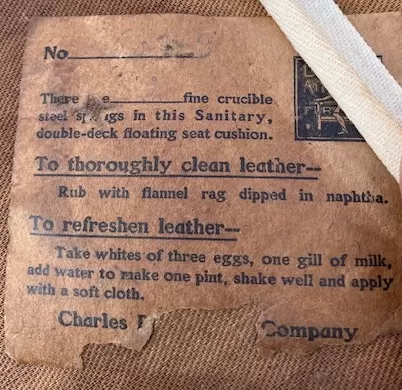
Leather was widely used by Arts and Crafts furniture makers, as they sought an alternative to the plush upholstery of the Victorian era. Leather, while more durable than fabric, is a natural material which continues to dry and deteriorate as it ages. We can delay the inevitable by replenishing the lost natural oils, so this recipe recommended by a major Arts and Crafts furniture manufacturer intrigued me.
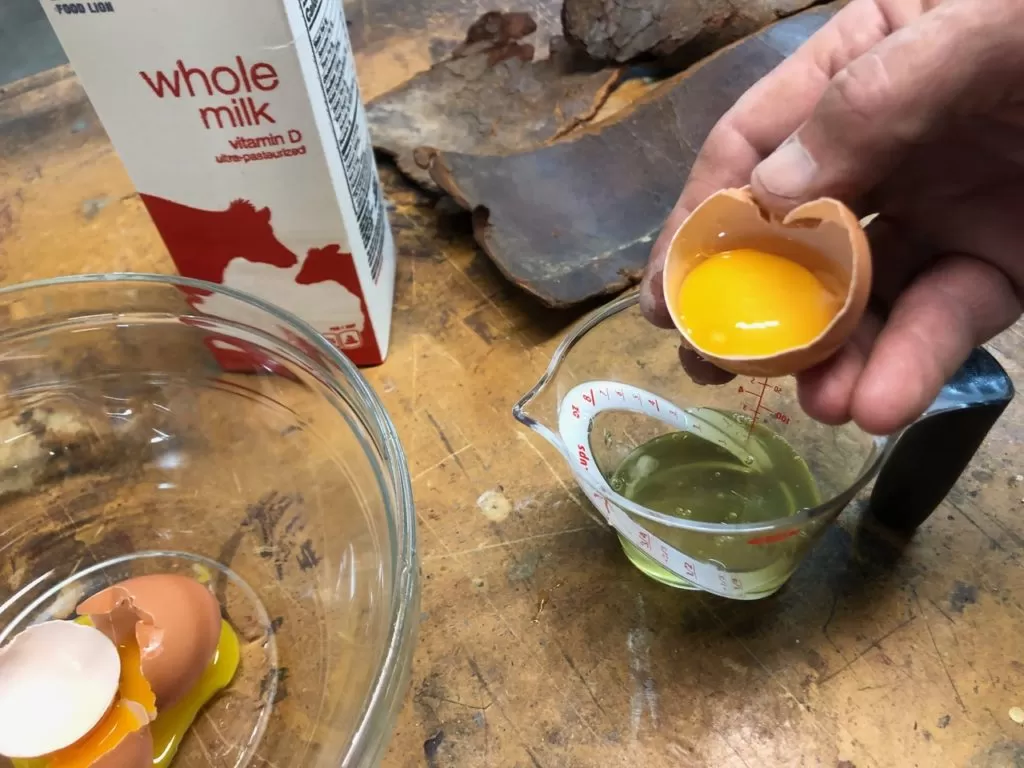
I was curious about the qualities of egg whites which prompted Limbert to include them in his recipe, so I did some research. Turns out egg whites are also recommended as a facial cleanser, hair conditioner, and a homemade glue. And so, I carefully separated the whites from the yolks of three eggs (which amounted to ½ cup of liquid) and added them to my mixing bowl.
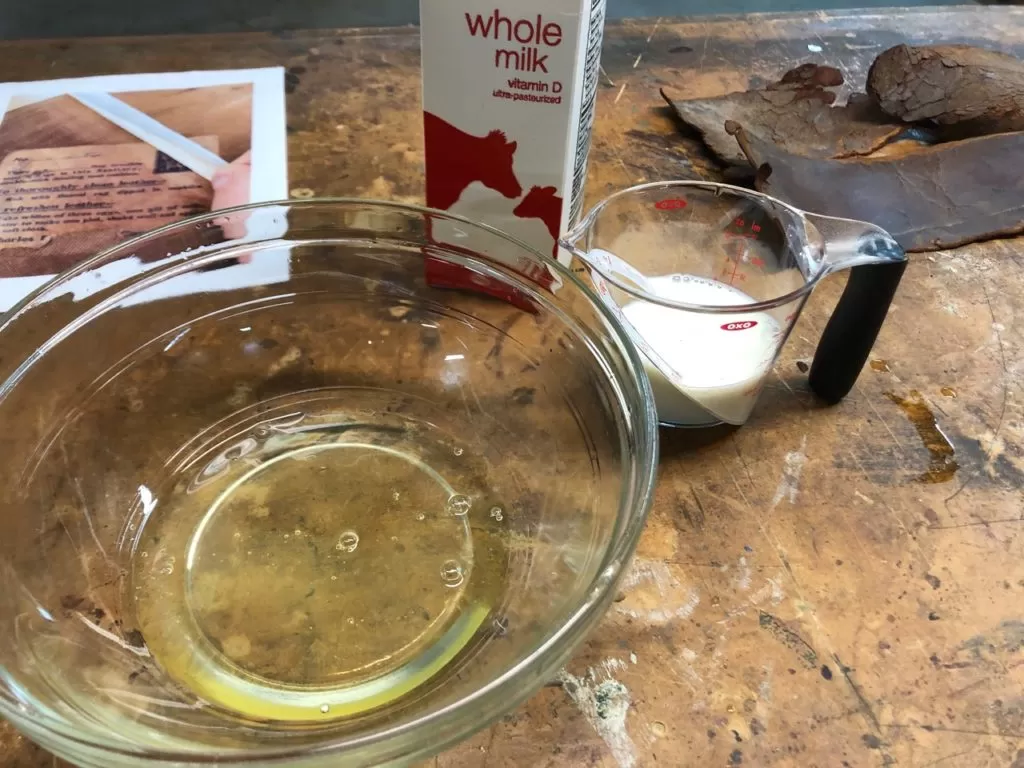
I also had to check out the properties of milk which classified it as a leather refresher. Turns out the natural fats in milk serve as a moisturizer in leather, while the lactic acid keeps it supple. And in case you did not realize it, a gill is equal to ½ cup. (Save that tidbit for a future trivia night.)
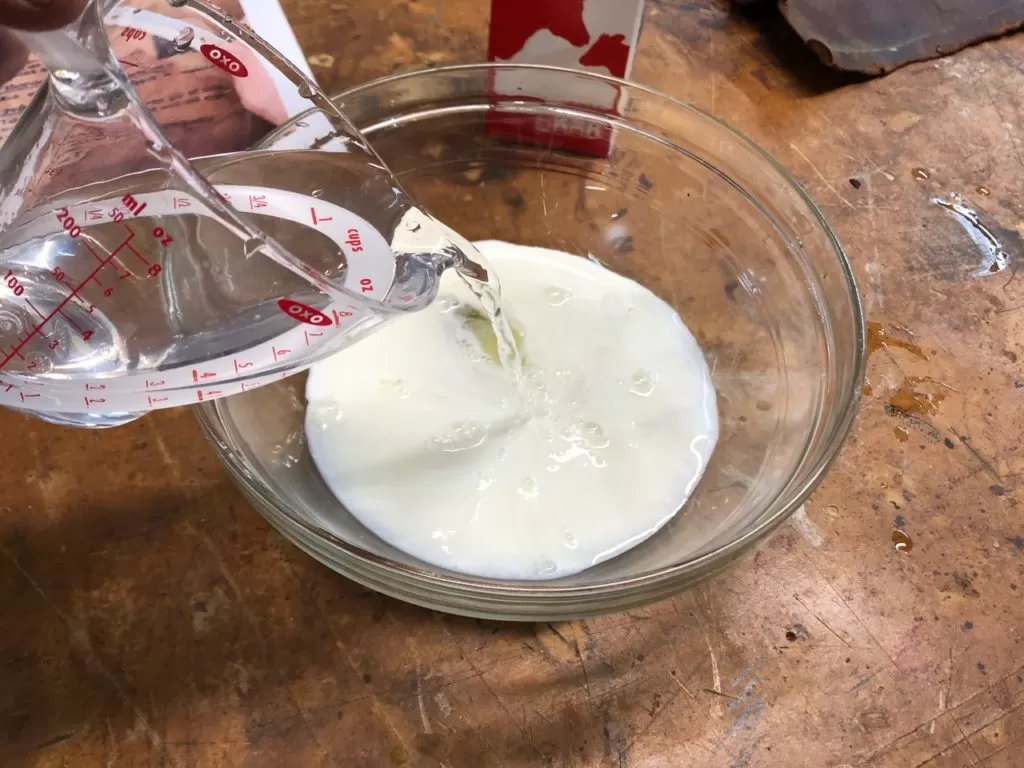
Some vintage formulas for leather cleaners recommend using either egg whites or milk directly on dried or dirty leather. Mr. Limbert, however, suggests adding an equal amount of water (1 cup) to the ½ cup of egg whites and ½ cup of milk, perhaps to simply make a larger amount of the cleaner, then mixing all three ingredients together.
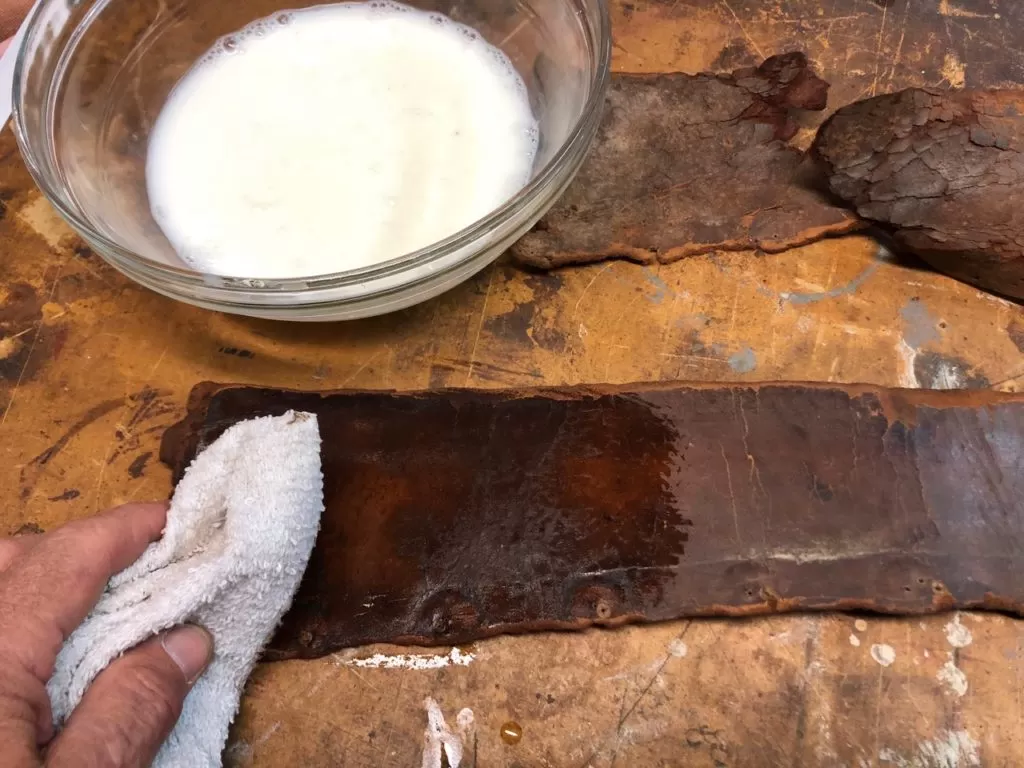
Being the saver that I am, I knew I had in my storage room some original Gustav Stickley leather scraps, so I dug out a few for my test. I applied a liberal amount of the recipe to the dry leather, giving it more as it soaked in. Afterwards I wiped off any excess the leather did not absorb and let it dry.
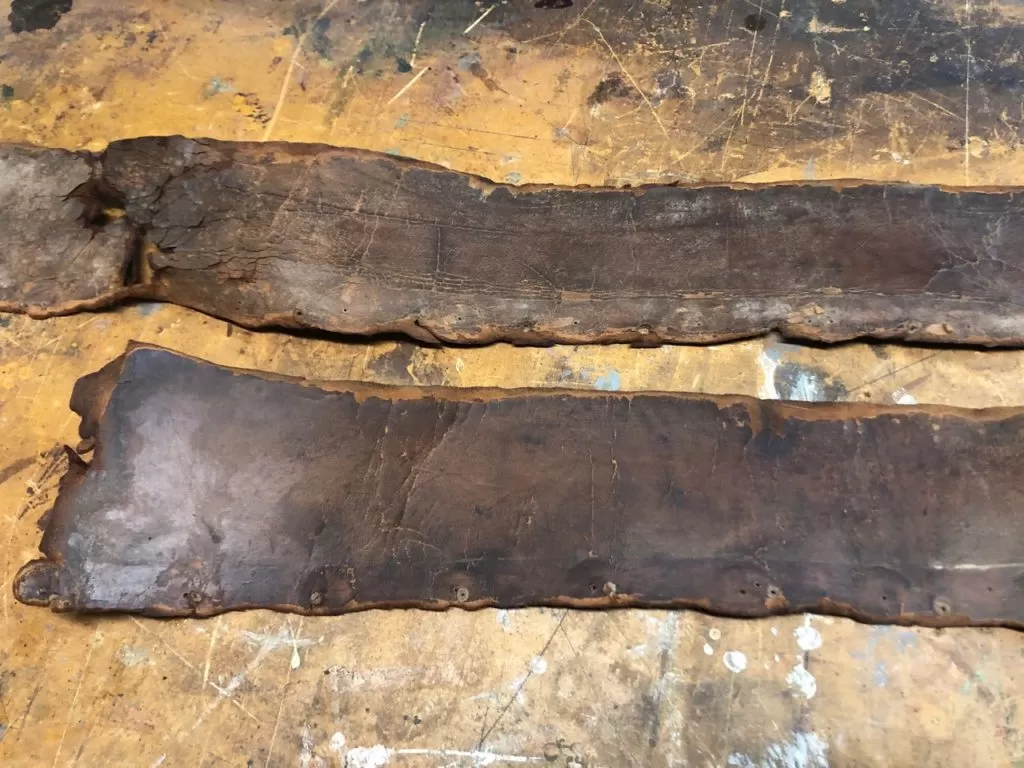
Adding any liquid to dry leather always turns it darker, but after the water evaporated from my test sample on the bottom, the leather still retained a pleasing sheen compared to the upper piece of leather I left untreated. And when I gave the test sample a sniff test the following morning, all I could smell was the delightful scent of old leather.
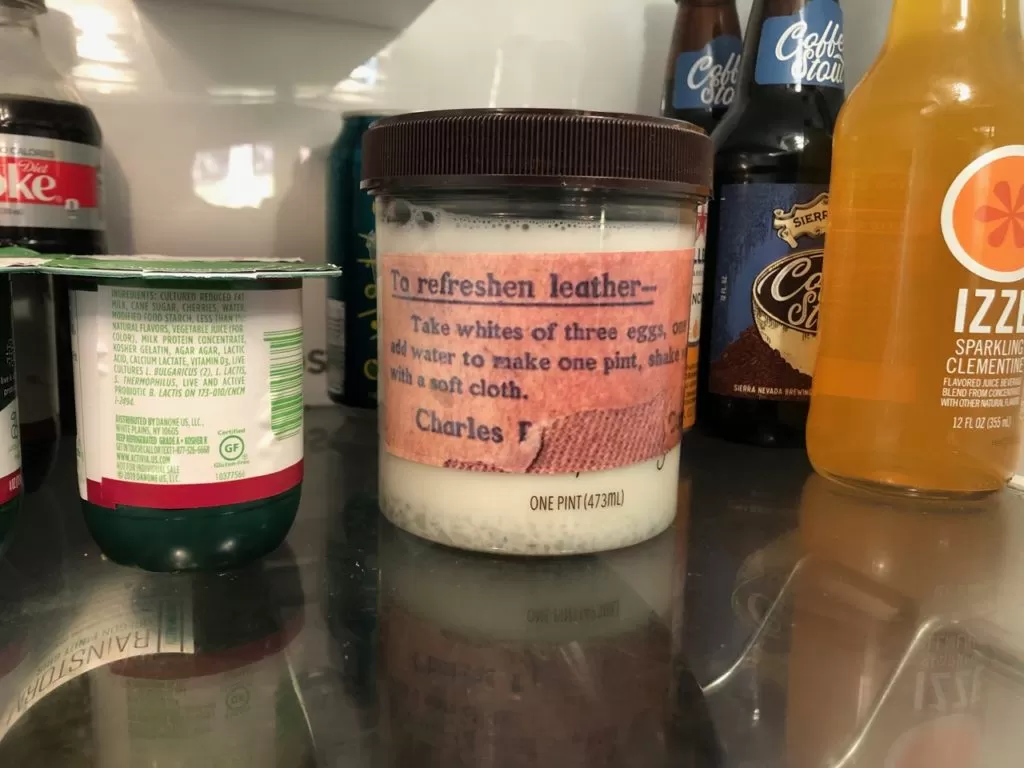
I’m assuming that raw eggs and whole milk left unrefrigerated would eventually turn rancid, so I carefully labeled Mr. Limbert’s recipe and slipped it in beside Leigh Ann’s yogurt. But I guess I could have turned it into an egg white omelet …..
– Bruce Johnson
PS – As far as using naphtha as a cleaner, it is similar to mineral spirits (paint thinner) but far more dangerous, as it is extremely volatile. It is difficult to locate for a reason. If you are old enough to remember lighter fluid, that is naphtha. Avoid it. There are safer leather cleaners, including mineral spirits for removing grease and wax, as well as Mr. Limbert’s recipe for light dust and dirt on leather.
